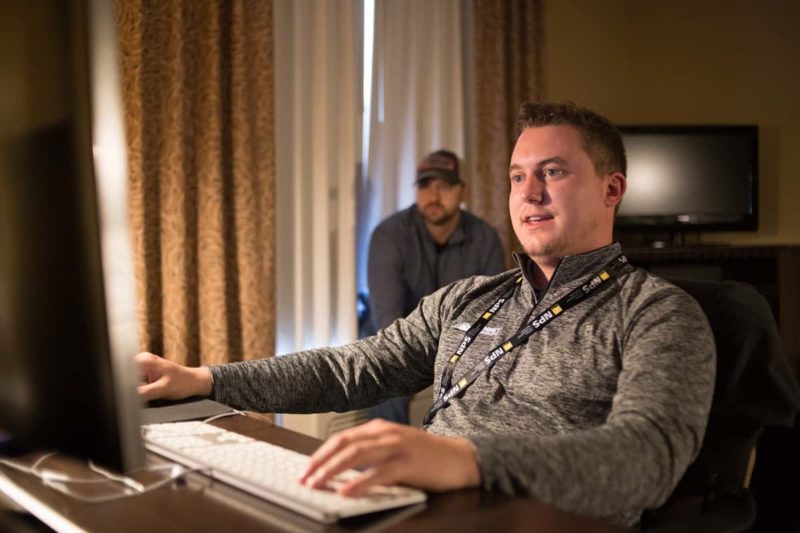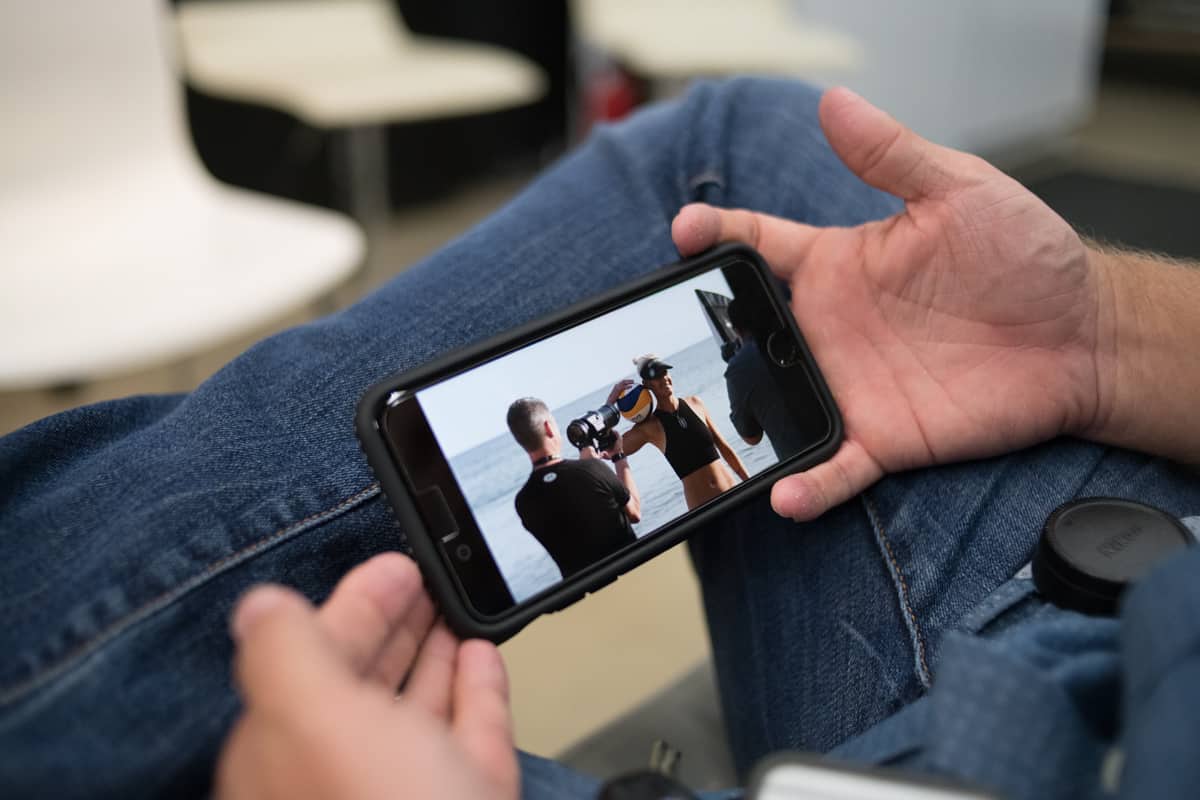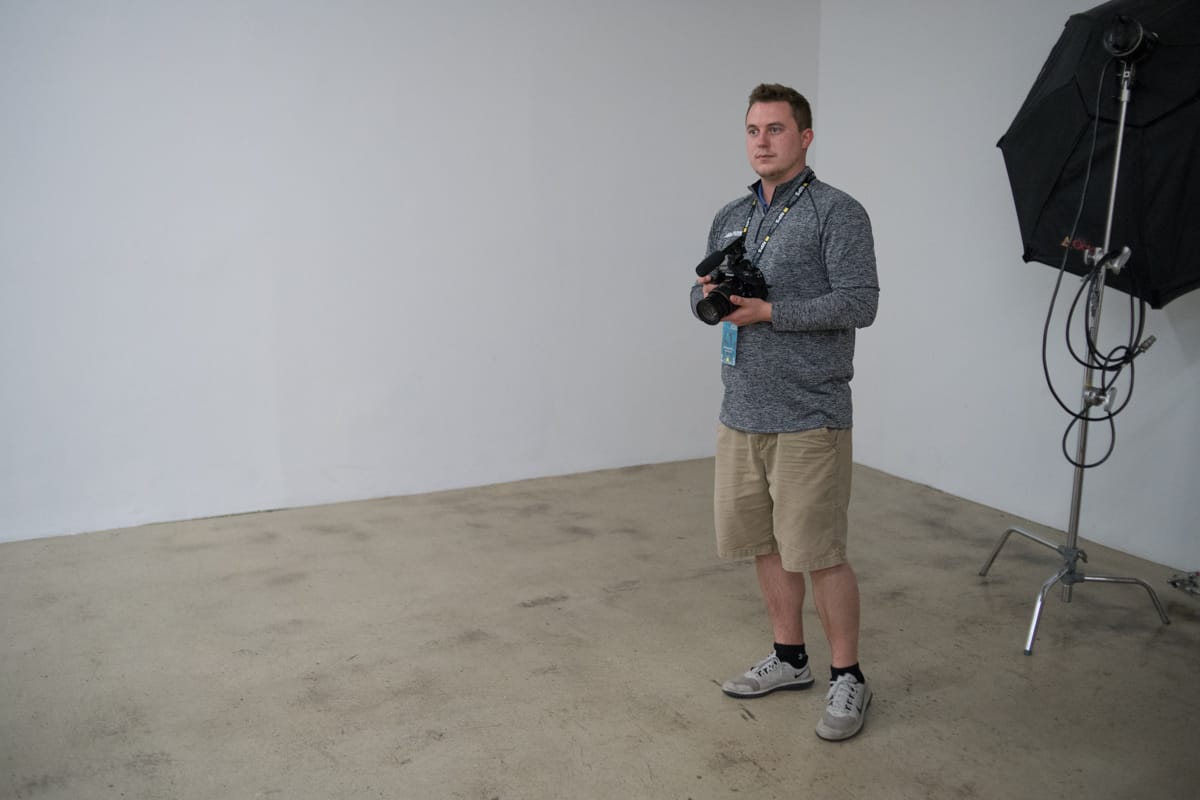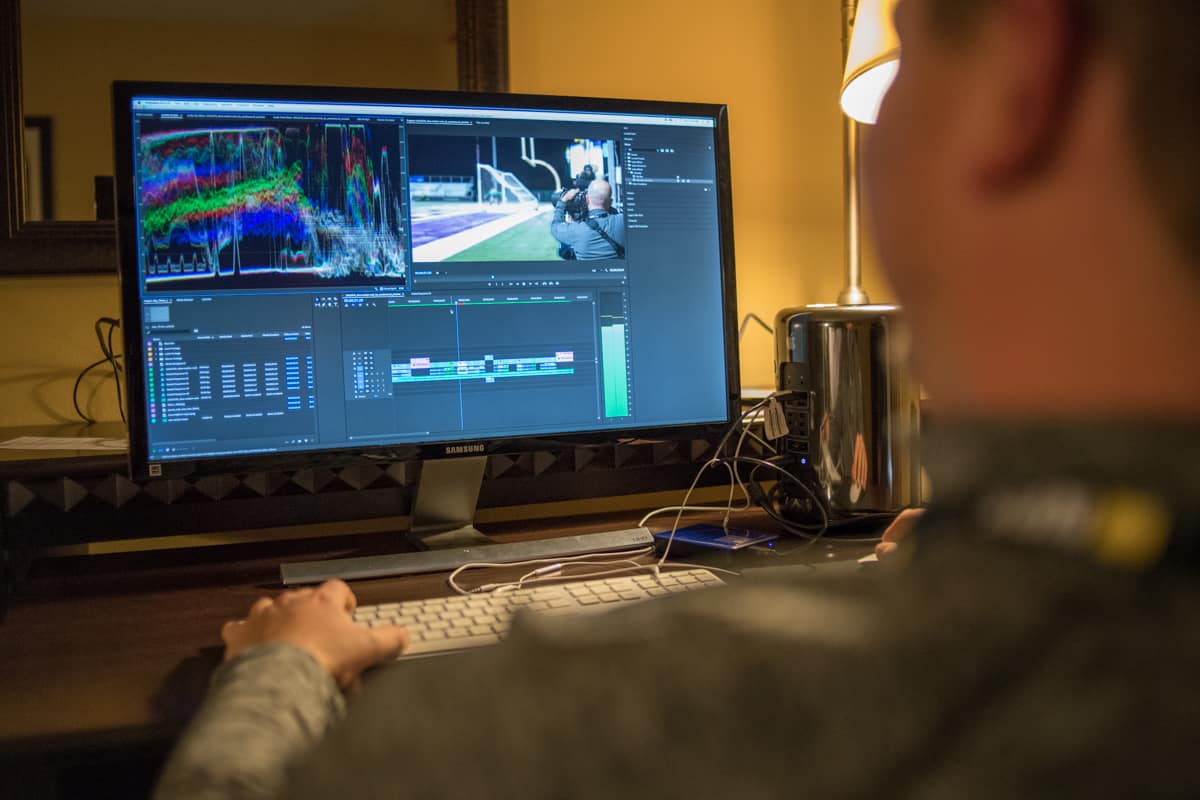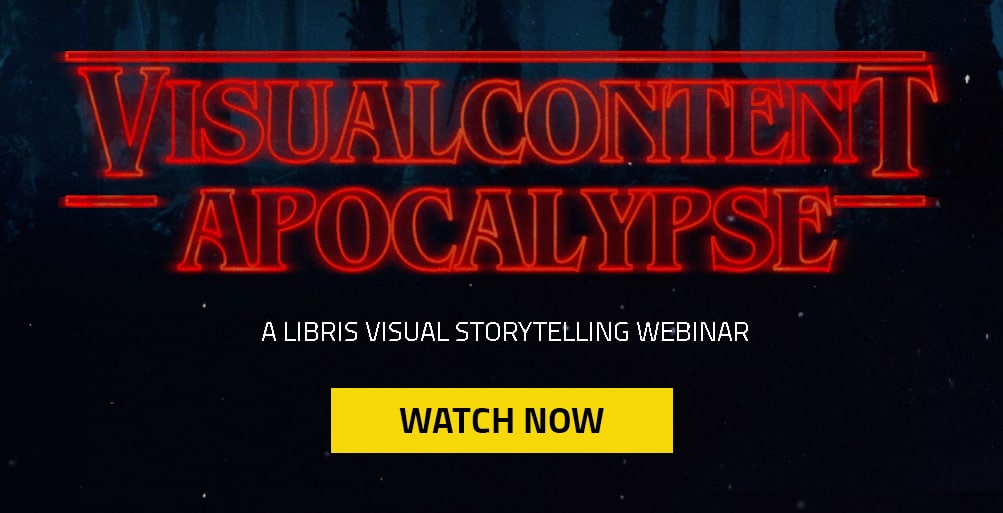The Summit Workshops produce over 10 photography workshops per year with topics ranging from adventure to nature to sports photography. As a part of their marketing efforts, Workshop Director Chris Steppig and his team produce a daily wrap-up video that he posts to social media accounts on Facebook and Instagram.
Let’s go behind the scenes with the team to see how they produce these quick-turn videos. Take notes along the way so you can produce daily video content at your next event.
Steppig explained, “We want to be able to give people a look inside of the workshop to give them a sense of how much can be accomplished in a day and the level of education that takes place.” The behind-the-scenes video compliments the stellar array of student-produced images that are used on the Workshop website.
During the course of the Workshop, Social Media Manager Steven Jacobs produces the daily videos, relying on other workshop staff to help him capture video footage that is incorporated into the final product.
1080p vs 4k
Because the intended destination is social media, Jacobs simplifies his workflow and shortens render times by shooting in 1080p even though his camera can shoot at the higher resolution of 4k. Additionally, shooting in 1080p gives him the option to also shoot at a higher frame rate to integrate slow motion into his videos.
“When I see a particular scene, I have a sense of whether it will play well in slow motion,” said Jacobs. “In truth, I’ve turned to filming everything at 60p to give me more flexibility in post. This definitely works much better than trying to ‘fake’ slow motion by interpolating frames.”
Jacobs captures short video clips that rarely exceed one minute in length. This method of filming makes it easier to find specific content, and fits the quick cut-style that he utilizes.
Audio
The daily videos aren’t intended to feature interviews of faculty and students where high quality audio is a necessity. Instead, Jacobs captures ambient audio using both the on-board mic as well as a Azden SMX-10 shotgun mic which mounts to the hotshoe of his camera.
Jacobs uses royalty-free music from Audio Jungle to underpin the entire video, so ambient audio is only used to accent the on-screen video. Minor inconsistencies in gain, wind noise, etc don’t adversely affect the final product and eliminates the need to use wireless lavaliers, multi-track audio and other factors that might complicate an already complex production.
Editing
Along with photography and lighting gear, Jacobs travels with a Mac Pro and 30” monitor. Jacobs uses Adobe Premiere and builds his media library from all the various cards that he’s ingested throughout the day.
“One of the main storytelling decisions is whether to follow the real chronology of the day, or to group the footage based on a theme like portraiture or sports action,” said Jacobs.
Because Instagram limits videos to 1 minute, Jacobs edits the daily video to keep under that threshold. “It usually takes me about 2 ½ hours to assemble the video once all the assets have been ingested,” said Jacobs.
The effort needed to create a daily video does require almost all of Jacobs’ time. “It’s not something that an organization is going to be able to do without a dedicated resource,” Steppig cautions. “But the video resonates with the students, faculty, sponsors and future customers, so we think it’s worth the effort.”
Gear:
- Nikon D500
- Nikon D5
- Nikkor AF-S DX 16-80mm f/2.8-4
- Nikkor AF-S 70-200mm f/2.8 VRII
- Azden SMX-10
- Yelangu S60T Carbon Fiber Stabilizer
- Manfrotto MVMXPROA4US Aluminum XPRO Video Monopod+
- Manfrotto MVKBFR video tripod
Up Next
Want to learn more about video marketing? Check out these posts!
